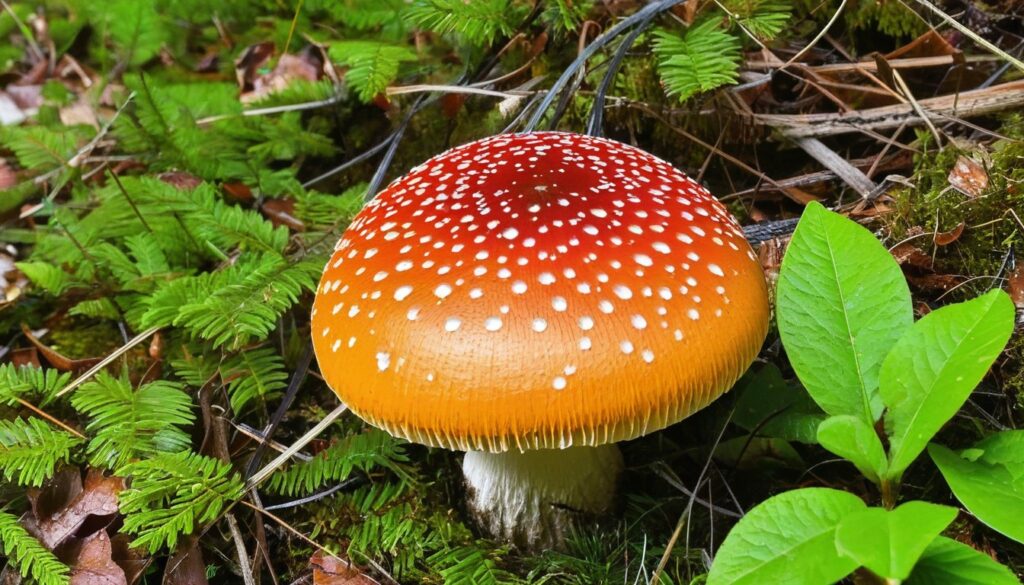When venturing out into the great outdoors of New Hampshire, it is essential to have a firm understanding of the various types of mushrooms, especially the poisonous ones. Identifying these mushrooms correctly can be a matter of life or death. In this article, we will provide you with the essential information you need to safely identify poisonous mushrooms in New Hampshire. With our help, you can be confident in your mushroom identification abilities and enjoy a safer outdoor experience.
Key Takeaways:
- Identifying mushrooms accurately can prevent harm
- Knowing the physical characteristics of poisonous mushrooms is key
- Use expert resources to aid in identification
- Follow safety tips when foraging for mushrooms
- Be aware of common misconceptions about mushroom identification
The Importance of Mushroom Identification
Mushroom identification is crucial when it comes to distinguishing between edible and poisonous varieties. Not all mushrooms are safe to consume, and some can cause serious harm or even death if ingested. Therefore, it’s essential to be able to properly identify mushrooms before consuming or using them in cooking.
Did you know? There are over 10,000 known species of mushrooms worldwide, with new species continuing to be discovered regularly.
Common Poisonous Mushrooms in NH
Mushroom foraging in New Hampshire can be a fun and rewarding experience, but it’s essential to be aware of the common poisonous mushroom species that lurk in the area. Failure to do so can lead to severe illness and even death. Keep an eye out for these species when you’re out foraging:
|
Mushroom |
Distinguishing Features |
Potential Risks |
|---|---|---|
|
Death Cap |
Smooth white cap, olive green to yellow cap margin, white gills, white spore print. |
The most deadly mushroom in the world. Causes severe abdominal pain, vomiting, and diarrhea, leading to liver and kidney failure. |
|
Destroying Angel |
White cap, white gills, white spore print. |
Extremely poisonous and often mistaken for edible mushrooms. Symptoms include nausea, vomiting, and abdominal pain leading to liver and kidney damage. |
|
False Morel |
Brain-like reddish-brown cap, wrinkled and irregularly shaped. |
Contains a toxin that can cause headaches, dizziness, and vomiting, leading to liver damage and even death in severe cases. |
Remember that these are only a few of the common poisonous mushrooms found in New Hampshire. It’s crucial to research and learn to identify all poisonous species before foraging to prevent the risk of accidentally consuming toxic mushrooms.
Physical Characteristics of Poisonous Mushrooms
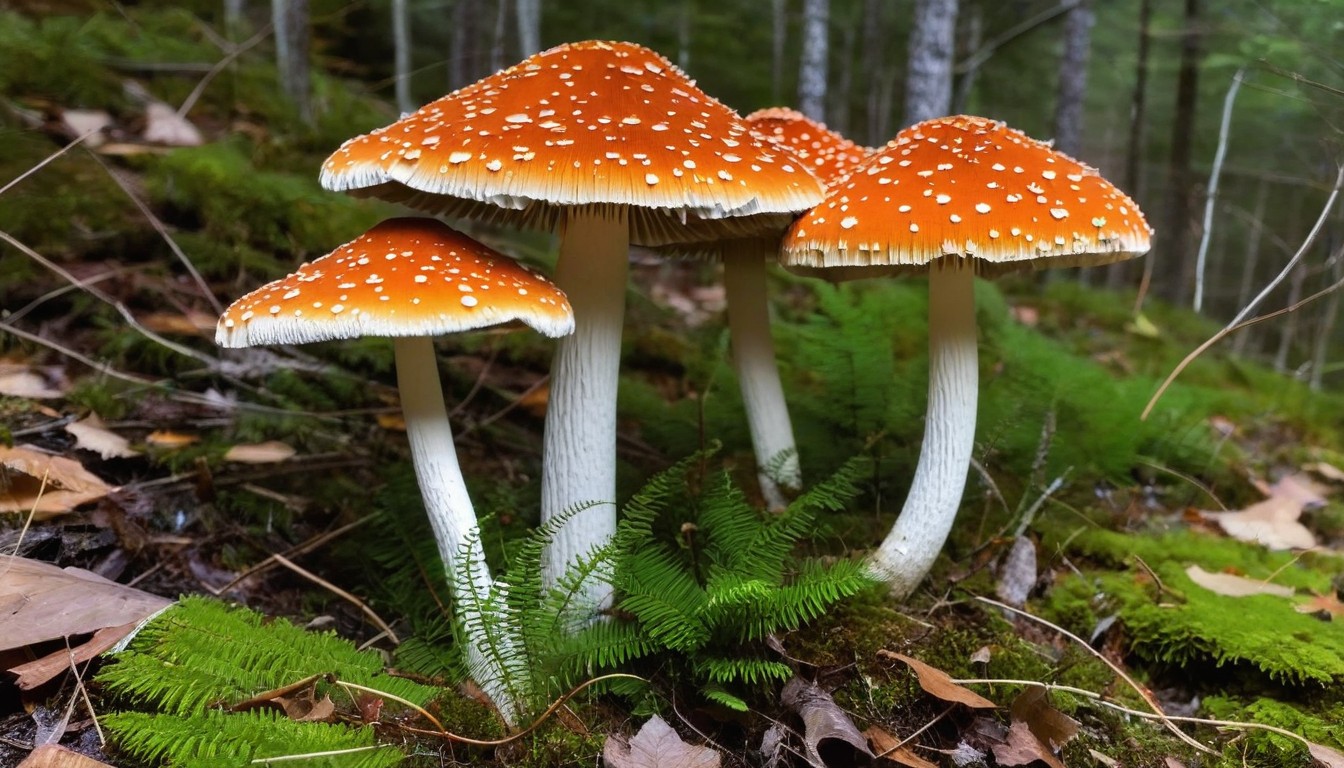
When it comes to identifying poisonous mushrooms in New Hampshire, one of the most crucial factors is recognizing their physical characteristics. While many edible and poisonous mushrooms look similar on the surface, there are certain visual cues that can help you distinguish between the two.
Some of the common physical characteristics of poisonous mushrooms in New Hampshire include:
|
Characteristic |
Description |
|---|---|
|
Color |
Many poisonous mushrooms have vibrant colors, such as bright red or yellow, while others may have dull or pale colors. |
|
Texture |
Some poisonous mushrooms have slimy or sticky surfaces, while others may have rough or scaly textures. |
|
Smell |
Many poisonous mushrooms have a strong, unpleasant odor that can help you differentiate them from edible varieties. |
|
Gills |
Examining the underside of a mushroom’s cap can reveal important information about its toxicity. For example, some poisonous mushrooms may have dark, narrow gills that extend down the stalk. |
|
Spores |
By examining the color and shape of a mushroom’s spores, you can often determine whether it is poisonous or not. |
While it’s important to be aware of these physical characteristics, it’s also essential to remember that not all poisonous mushrooms look the same. Some may have mild physical features that are difficult to detect, while others may have no visible distinguishing characteristics at all. That’s why it’s always best to err on the side of caution and avoid consuming any mushroom that you cannot confidently identify as edible.
Key Differences Between Edible and Poisonous Mushrooms
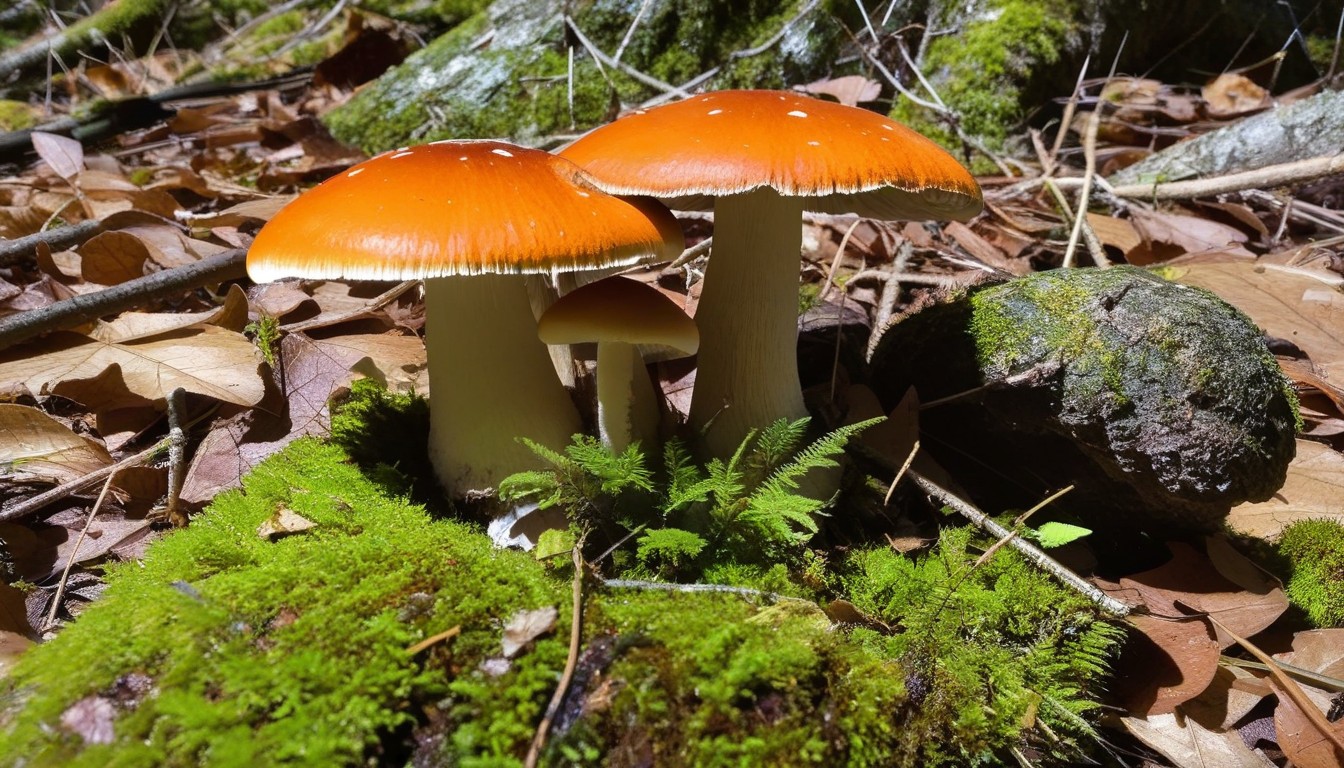
It is essential to distinguish between edible and poisonous mushrooms to avoid any potential health risks when foraging. Here are some key differences to keep in mind:
|
Edible Mushrooms |
Poisonous Mushrooms |
|---|---|
|
Have a pleasant aroma and taste |
May give off a foul or pungent odor |
|
Smooth caps and stems |
Warty caps or stems with scales or rings |
|
Caps often have varying shades of brown or white |
Caps may have bright colors like red, yellow, or green |
|
Tender, fleshy texture |
Tough or fibrous texture |
Note: These are general guidelines, and not all edible or poisonous mushrooms will fit these descriptions. It is crucial to have proper identification before consuming any wild mushroom.
Additionally, be aware of any potential look-alike mushrooms that may have similar characteristics to edible varieties. Always err on the side of caution and consult with an expert if you are unsure.
Mushroom Foraging Safety Tips
Foraging for mushrooms in New Hampshire can be an enjoyable and rewarding experience, but it’s essential to follow safety guidelines to avoid any potential dangers. Here are some safety tips to keep in mind:
- Always bring a field guide and familiarize yourself with the physical characteristics of poisonous mushrooms.
- Wear protective clothing and bring gloves and a knife for safe mushroom harvesting.
- Stick to well-known areas and avoid foraging near roadsides, industrial sites, and areas that may be contaminated with pollutants or pesticides.
- Never rely solely on online resources or smartphone apps for mushroom identification.
- Only consume mushrooms that you are confident are edible, and be wary of any adverse reactions.
- When trying a new species of mushroom, always eat a small portion first and wait to see if any adverse reactions occur before consuming more.
By following these safety tips and staying vigilant, you can safely enjoy the many benefits of mushroom foraging in New Hampshire.
Resources for Mushroom Identification
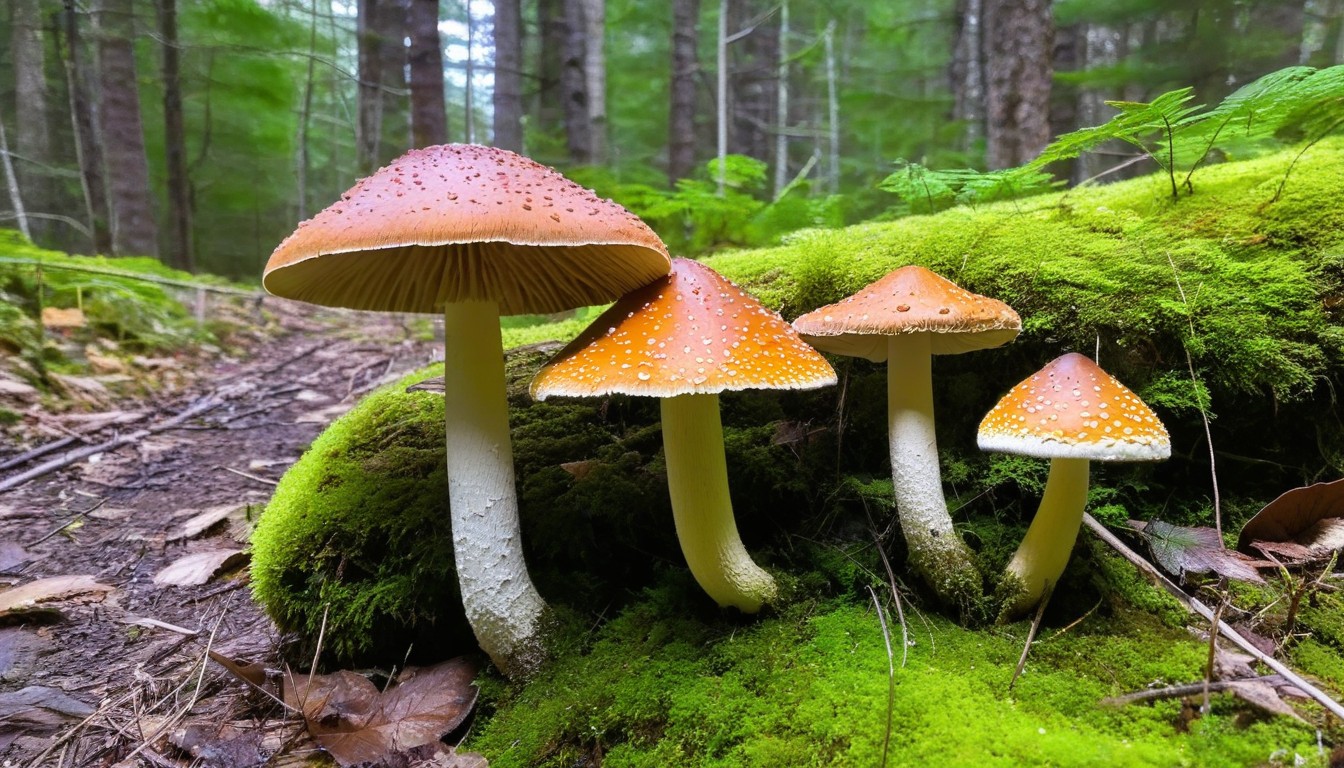
Identifying mushrooms can be challenging, but fortunately, there are many resources available to help you learn more about different species and identify them correctly. Whether you prefer using a field guide or online resources, here are some great options to consider:
|
Resource Type |
Recommended Websites and Guides |
|---|---|
|
Field Guides |
Wild Mushrooms of New England by David L. Spahr and Alan Bessette, The Complete Mushroom Hunter: An Illustrated Guide to Finding, Harvesting, and Enjoying Wild Mushrooms by Gary Lincoff, and North American Mushrooms: A Field Guide to Edible and Inedible Fungi by Orson K. Miller Jr. |
|
Websites |
Mushroom-Collecting.com, MushroomExpert.com, and Mushroom Observer |
|
Local Experts |
The New Hampshire Mushroom Company and expert mycologists from the Northeast Mycological Federation |
By utilizing these resources, you can become more confident in identifying different mushrooms in New Hampshire and enjoy foraging safely. Remember, always double-check your identifications and never consume a mushroom unless you are 100% positive of its species.
Common Misconceptions about Mushroom Identification
Despite the importance of safely identifying mushrooms, there are several common misconceptions that continue to circulate. By clarifying these misunderstandings, we hope to improve the accuracy of mushroom identification and protect our readers from potential harm.
“If animals can eat it, it must be safe for humans.”
While some animals can safely consume certain types of poisonous mushrooms, their digestive systems differ from humans. Certain toxins may not affect animals but can be extremely harmful or even deadly to humans. Always identify mushrooms correctly before consuming them, regardless of whether animals have eaten them.
“Cooking poisonous mushrooms will make them safe to eat.”
Some people believe that cooking poisonous mushrooms will eliminate their toxins, but this is not always true. Certain toxins are heat-stable and cannot be destroyed through cooking. Additionally, if a mushroom is already toxic, cooking it may break down its structural integrity and release more toxins. Only consume mushrooms that have been positively identified as safe to eat.
“All mushrooms that stain blue are hallucinogenic.”
While there are some blue-staining mushrooms that contain psilocybin, a potent hallucinogenic compound, not all blue-staining mushrooms are hallucinogenic or even edible. Other factors, such as the mushroom’s shape and odor, are more reliable indicators of its identity.
“Mushrooms with a pleasant aroma are safe to eat.”
The aroma of a mushroom does not necessarily indicate its safety or edibility. Many poisonous mushrooms have an attractive smell, while some edible mushrooms do not have a noticeable aroma. Smell is just one factor to consider when identifying mushrooms; always use multiple distinguishing characteristics to positively identify them.
Symptoms of Mushroom Poisoning
Identifying poisonous mushrooms is crucial to avoid mushroom poisoning, which can range from mild symptoms to life-threatening consequences. The symptoms of mushroom poisoning may not appear immediately and can vary depending on the type of mushroom, the amount consumed, and the individual’s health.
Some common symptoms of mushroom poisoning include:
- Nausea and vomiting
- Abdominal pain
- Diarrhea
- Weakness and fatigue
- Dizziness
- Headaches
- Confusion and disorientation
- Hallucinations and seizures
- Jaundice
- Coma
- Death
It is crucial to seek immediate medical attention if poisoning is suspected. Bringing a sample of the mushroom ingested can be helpful for identification and treatment purposes.
If you or someone you know is experiencing symptoms of mushroom poisoning, call your local emergency services immediately.
Edible Mushroom Recipes and Alternatives
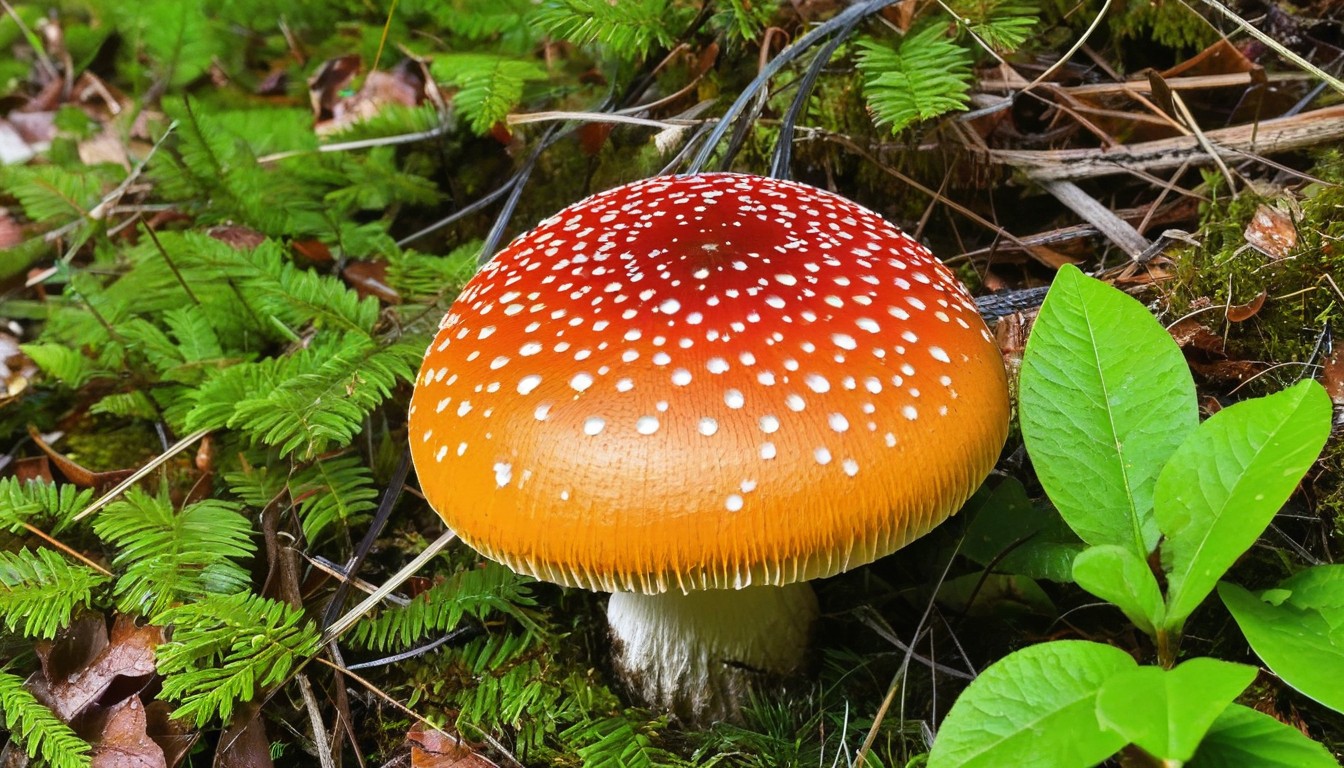
If you’re looking to enjoy mushrooms without the risk of poisoning, New Hampshire is home to several edible varieties that can be easily incorporated into your favorite recipes.
Mushroom and Spinach Quiche
|
Ingredients |
Instructions |
|---|---|
|
|
Other edible mushroom varieties that can be used in your cooking include oyster, chanterelle, and morel mushrooms. These mushrooms can be sautéed, grilled, or roasted and added to risottos, stir-fries, and soups to add a rich, earthy flavor.
If you are unable to find any edible mushrooms, there are also alternatives such as portobello mushrooms, which are widely available in most supermarkets and can be used in a variety of dishes, from burgers to stews.
“Cooking with edible mushrooms is not only safe but also delicious. Experiment with different recipes and varieties to discover new and exciting flavors.”
Edible Mushroom Hunting Tips
If you’re interested in foraging for edible mushrooms in New Hampshire, it’s important to follow some basic tips to ensure you have a safe and successful experience. Here are some key recommendations to keep in mind:
Know Where to Look
Edible mushrooms can be found in a variety of places, including forests, meadows, and even your own backyard. Some popular edible species to look out for in New Hampshire include Morels, Chanterelles, and Lobster Mushrooms. However, it’s essential to be sure you’ve identified the mushroom correctly before consuming it.
Pack the Right Supplies
When heading out for a mushroom hunt, be sure to pack a basket or mesh bag for holding your finds, as well as a knife for cutting stems. It’s also helpful to bring along a field guide or reference book to assist with identification.
Stay Safe While Hunting
While foraging can be a fun and rewarding activity, it’s essential to take precautions to stay safe and avoid any toxic varieties. Always wear long sleeves and pants to protect yourself from ticks and other insects, and avoid touching mushrooms with bare hands. It’s also a good idea to avoid picking mushrooms growing alongside roads or in polluted areas.
Avoid Picking Too Many
It’s important to be mindful when foraging and to avoid picking more mushrooms than you can eat. Over-picking can damage the local ecosystem and leave fewer mushrooms for other foragers or animals to enjoy.
Try New Recipes
Once you’ve collected your mushrooms, there are endless possibilities for preparing them in delicious meals. Consider trying out a new recipe or experimenting with different flavor combinations to find your favorite way to prepare them.
By following these tips and taking the time to properly identify edible mushrooms, you can safely and enjoyably forage for these delicious and nutritious fungi in the beautiful forests of New Hampshire.
Conclusion
Identifying poisonous mushrooms in New Hampshire is a critical skill that all outdoor enthusiasts should possess to avoid potential harm. It is essential to prioritize your safety and be cautious when foraging for mushrooms. Remember, failing to identify poisonous mushrooms correctly can lead to serious health consequences.
In this article, we have discussed the importance of mushroom identification, common poisonous mushroom species found in New Hampshire, physical characteristics of poisonous mushrooms, key differences between edible and poisonous mushrooms, and provided tips for mushroom foraging safety.
We have also shared various resources available for mushroom identification, addressed common misconceptions about identifying mushrooms, and discussed the symptoms of mushroom poisoning to ensure timely medical attention. Additionally, we have provided you with edible mushroom recipes and alternative options for enjoying mushrooms and tips for safely hunting edible mushrooms in the wild in New Hampshire.
By following the guidelines and safety tips shared in this article, you can confidently forage for mushrooms and enjoy the benefits they provide while staying safe. Always prioritize your safety and remember to enjoy the beauty of nature in New Hampshire responsibly.
FAQ
How can I safely identify poisonous mushrooms in New Hampshire?
Safely identifying poisonous mushrooms in New Hampshire requires knowledge and caution. It is recommended to consult field guides, websites, or seek advice from local experts to ensure accurate identification.
Why is it important to correctly identify mushrooms?
Correctly identifying mushrooms is crucial, especially when distinguishing between edible and poisonous varieties. Misidentification can have serious health consequences, as some mushrooms can be highly toxic.
What are some common poisonous mushrooms found in New Hampshire?
New Hampshire is home to several common poisonous mushroom species, including the Death Cap (Amanita phalloides) and the Destroying Angel (Amanita bisporigera).
What physical characteristics can help identify poisonous mushrooms?
Physical characteristics such as color, shape, texture, and presence of a ring or volva can provide clues for identifying poisonous mushrooms. However, it is important to note that relying solely on physical characteristics can be unreliable.
What are the key differences between edible and poisonous mushrooms?
Edible mushrooms often have a pleasant odor, a firm texture, and distinct colors. However, poisonous mushrooms may have a foul smell, slimy or fibrous textures, and vivid colors that do not fade when cooked.
What safety tips should I follow when foraging for mushrooms?
When foraging for mushrooms, ensure you are properly educated about identifying both edible and poisonous varieties. Only consume mushrooms you are certain are safe, and if in doubt, consult a local expert. Avoid picking mushrooms in polluted areas and always carry a mushroom collection basket to allow spores to spread.
What resources are available for mushroom identification in New Hampshire?
Resources such as field guides, websites, and local experts can be valuable sources of information for identifying mushrooms in New Hampshire. The New Hampshire Mushroom Company and the New England Wild Flower Society are also excellent resources for mushroom enthusiasts.
What are some common misconceptions about mushroom identification?
One common misconception is that the “poisonous” taste test is a reliable method for identifying mushrooms. This is not true, as certain poisonous varieties can still taste appealing. Another misconception is that all brightly colored mushrooms are poisonous, which is not always the case.
What are the symptoms of mushroom poisoning?
Symptoms of mushroom poisoning can vary depending on the toxin ingested but generally include nausea, vomiting, abdominal pain, diarrhea, sweating, and in severe cases, liver or kidney failure. If mushroom poisoning is suspected, seek immediate medical attention.
Are there any alternative ways to enjoy mushrooms besides foraging?
Absolutely! If you prefer not to forage for mushrooms, consider purchasing edible varieties from local farmers’ markets or grocery stores. There are also numerous delicious recipes available that use edible mushrooms as ingredients.
What are some tips for hunting edible mushrooms in New Hampshire?
When hunting edible mushrooms in New Hampshire, explore diverse habitats, such as forests and woodlands, and pay attention to weather conditions. Look for symbiotic relationships with certain tree species, such as oaks or birches. It is also important to properly clean and cook mushrooms before consumption.
Can you summarize the key points about mushroom identification in New Hampshire?
Properly identifying mushrooms in New Hampshire is crucial for safety. Misidentification can lead to serious health consequences. Utilize reliable resources, such as field guides or local experts, and follow safety precautions when foraging for mushrooms. If in doubt, always err on the side of caution.

